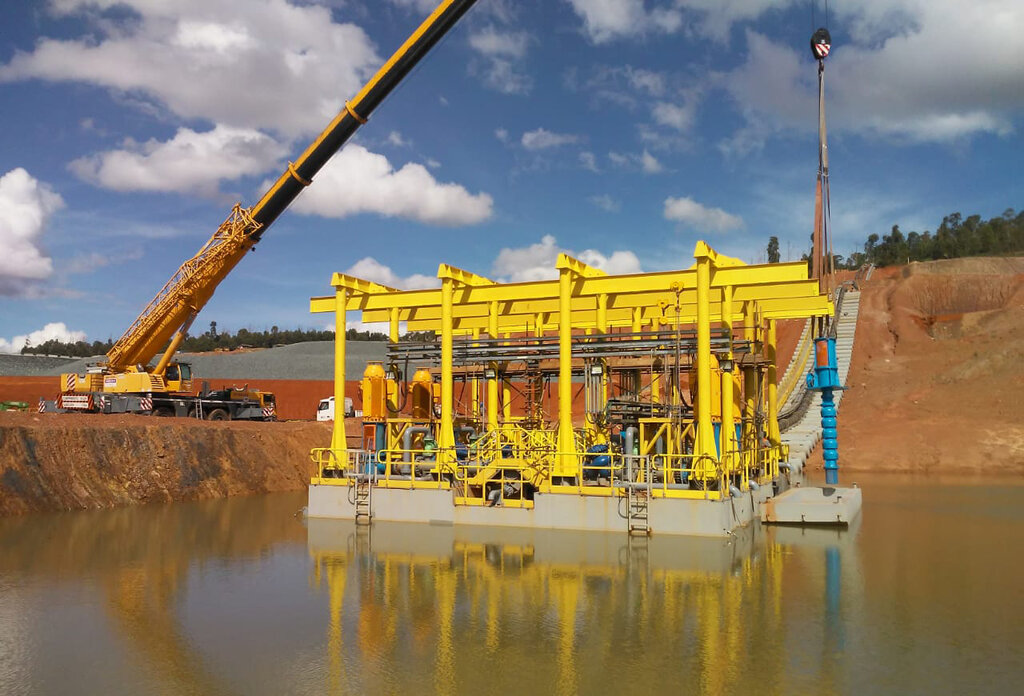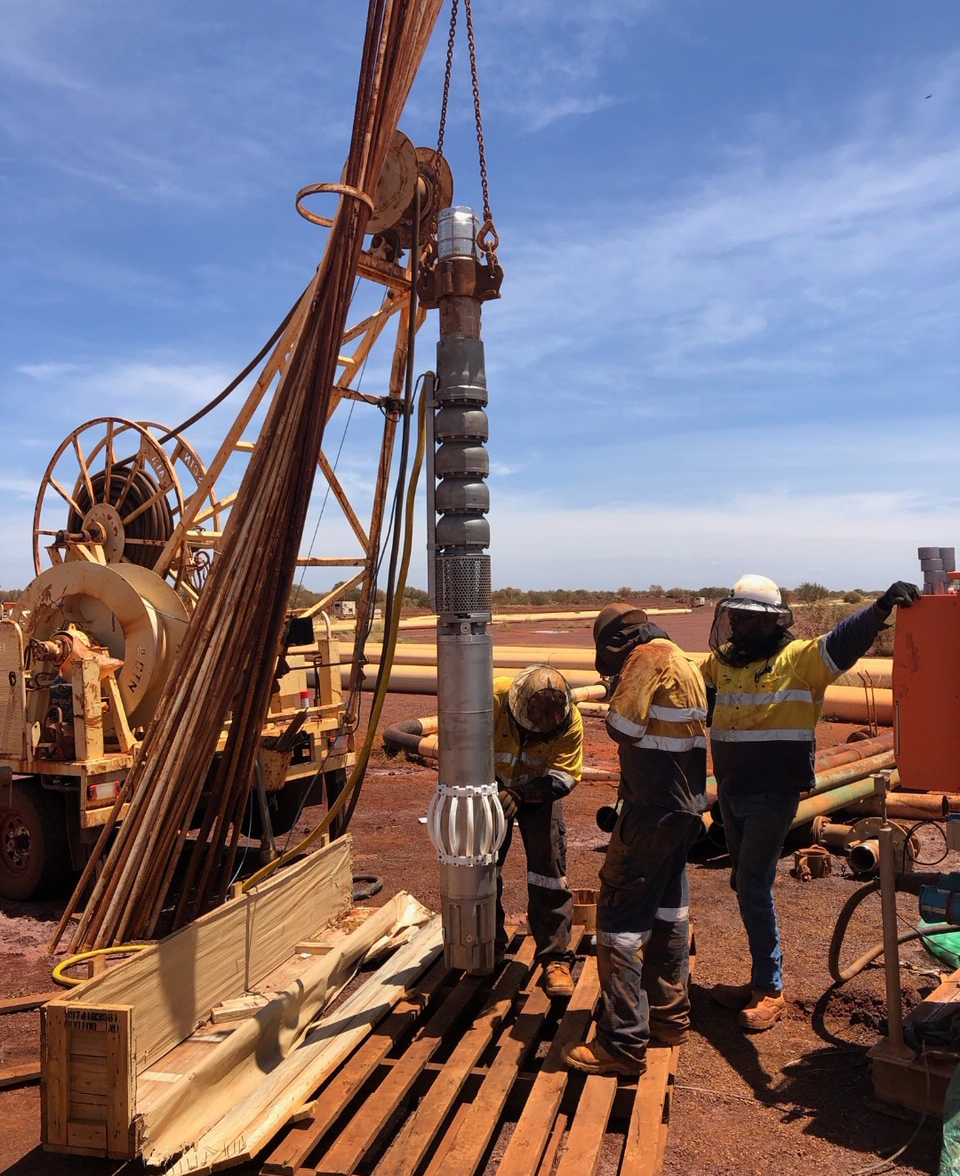Company Insight
Sponsored by KSB Australia
Dewatering in mining demands durable, reliable and efficient pumps
Standfirst...
KSB offers comprehensive services to help relieve the pressure and reduce the life cycle cost of your most challenging pump problems.
Water is essential in mining, with its control depending on its role in processes, influencing the choice of pumping technologies.
Managing process water and removing groundwater are key challenges. Both contain abrasive and corrosive elements that affect pump performance and lifespan. Factors like working conditions, remoteness, temperature, and limited power also impact operations.
Mines in Chile, Australia, Mozambique, and Mexico all require dewatering and safe disposal of potentially contaminated water. They share the need for efficient solutions that maximize system longevity, effectiveness, and cost-performance.
The changing face of mining
The search for rare and precious minerals and metals has opened mining in countries where previously the industry was minimal or non-existent. Consequently, mining companies and equipment manufacturers have had to develop new techniques and products. With the major mining companies having operations in many global locations, becoming a preferred equipment supplier is essential.
“The dewatering market is slowly shifting from a pure CAPEX point of view to an increasingly OPEX perspective,” reports Brett Lewis, Mining Manager at KSB Australia. “This is especially true for the large mines that realize that poorly designed equipment that regularly fails, causes a significant increase in replacement and servicing cost. Some mining companies are now committing to a carbon neutral target in the next 20 to 30 years, so are focussing on high efficiency equipment. They want to phase out diesel reliance by connecting most bores to their local electrical grid.”
KSB understands that mining companies are recording pump performance and accumulating data to compare brands to rank their qualities or deficiencies. This is good news for KSB as the company is committed to delivering reliable and efficient pumps, contributing to reduce the carbon footprint of mining dewatering operations.

KSB Brazil’s solution is a floating station fitted with KSB vertical turbine B pumps positioned over a pontoon.
Is there a ‘one-fits-all’ pump solution?
The answer to this is a resounding ‘no’, but by sharing experiences and working with the same international mining companies, KSB developed appropriate solutions. KSB’s involvement in the iron ore industries in Brazil and Australia demonstrate two different approaches to dewatering, both employing vertical multi-stage pumps.
In Brazil’s Minas Gerais State open pit iron ore mines excessive ground water, monsoons and underground lakes are problems. To maintain continuous production, water has to be pumped to a dewatering lake which requires its level to be raised two or three times a year. KSB Brazil’s solution is a floating station fitted with vertical turbine B Pumps positioned over a pontoon. The pontoon rises and falls with changing water levels, eliminating the need for the pumps to be repositioned. This reduces costs to the customer and after 20 successful years it has become the standard for this type of equipment in South America.
“The floating station supporting the pumps over the pontoon delivers the flow rate requested by the customer,” explains Jardel Ribeiro, Sales Manager, KSB Brazil. “Sometimes the pumps, high power motors and associated equipment results in the size of the floating station being increased. Stabilizing equipment that weighs more than 200 tons requires a lot of planning, in addition to the challenge of building a system in such a remote area.”
Boreholes in Australia
In the Pilbara Region of Western Australia, iron ore is mined in several locations. The mineral deposit in this region sits between 90m and 117m below the surface. With the ground water and water table regularly replenished in wet seasons and cyclones adding to the inundation, more than 75% of the iron ore is below the water table. If too much water mixes with iron ore, it becomes low grade and unsuitable for export, resulting in massive revenue losses. Also, surface dewatering processes are extremely costly if the water is very high.

At its facility in Western Australia, KSB provides mine operators with its UPA multistage borehole pump.
The accepted dewatering process within the region is to pump the water out through boreholes. However, this has its challenges. High water temperatures and high salinity result in excessive corrosion, whilst iron bacteria can grow on motors which prevent efficient motor cooling. The presence of gas is a constant threat in some areas as this causes gas lock on the impellers resulting in heavy vibrations, which places a strain on the motor, loss of flow rate and motor failure.
Off-the-shelf products often fail in this application, with bore pumps typically failing within 12 weeks or less. At its Western Australia facility, KSB offers the UPA multistage borehole pump, customized to withstand site conditions. Though more expensive, the UPA offers a longer lifespan and lower ownership costs.
Summary
KSB’s mine dewatering solutions safely and efficiently lower groundwater in open pit, underground, and borehole applications. Regardless of location, operation type, geology, or water corrosiveness, KSB offers fluid handling technologies suited to all needs. This is possible through decades of global R&D, innovation, and knowledge sharing. Wherever pumping is needed, KSB provides a coordinated solution.
Contact information
KSB Australia
13 Hawkins Crescent
Bundamba, Queensland
Australia 4304
Tel.: +61 1300 073 887
Email: Enquiries@ksb.com.au
Web: www.ksb.com.au
